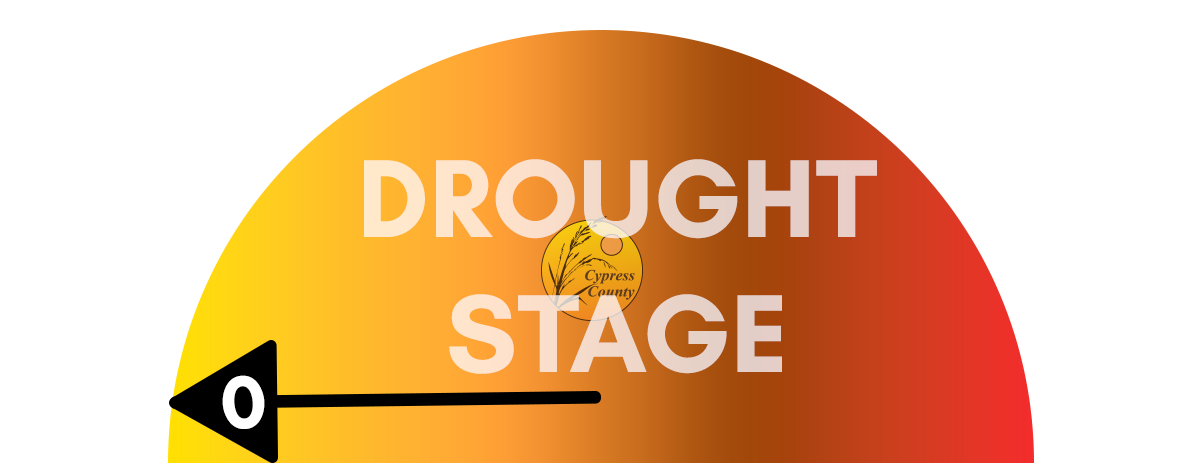
Water is a necessity, and during times of drought can be in limited supply. For that reason, the county has a Drought Management Plan which designates various water conservation measures depending on the severity of the water shortage.
Cypress County's water supply comes through the South Saskatchewan River via the City of Medicine Hat. See the city's plan here.
Measures are broken up into four stages. Here is the public portion of the plan:
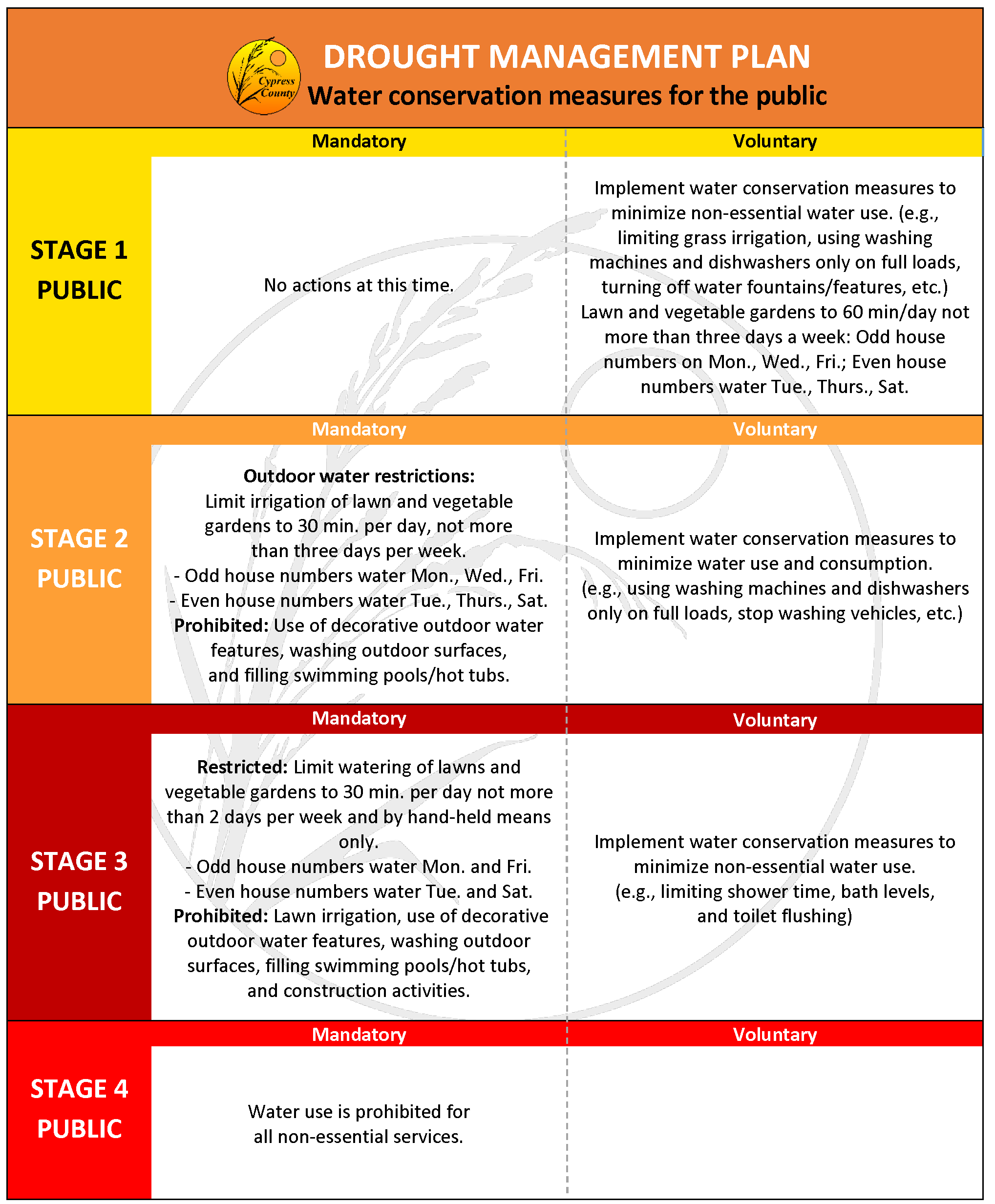
Stage 1
STAGE 1: WARNING WATER CONSERVATION MEASURES
The following water conservation measures shall be implemented immediately upon the declaration of a Stage 1 drought and shall remain in effect unit the conclusion of the water conservation period.
Stage 2
STAGE 2: WATER CONSERVATION MEASURES
The following water conservation measures shall be implemented immediately upon the declaration of a Stage 2 drought and shall remain in effect until the conclusion of the water conservation period.
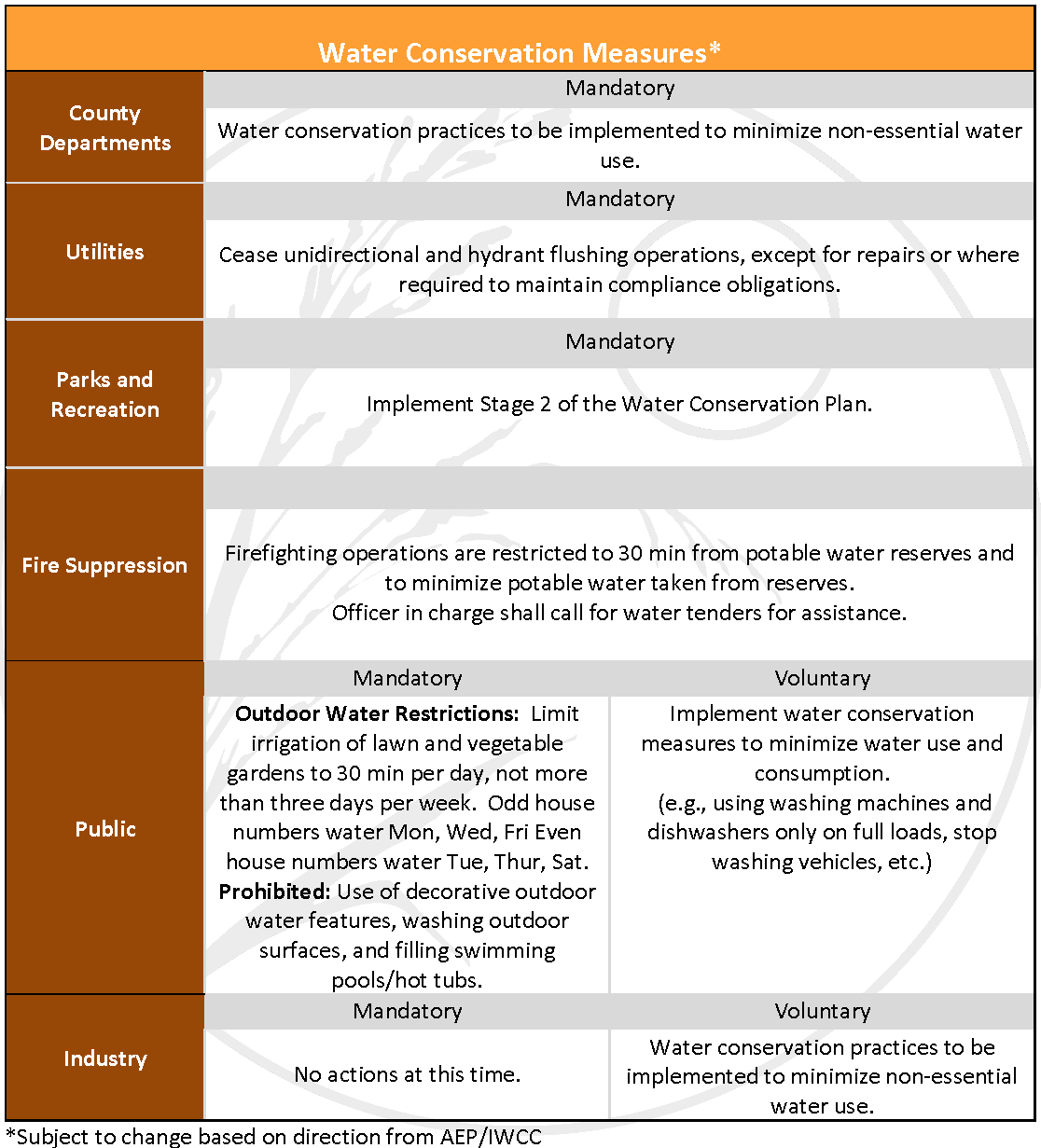
Stage 3
STAGE 3: WATER CONSERVATION MEASURES
The following water conservation measures shall be implemented immediately upon the declaration of a Stage 3 drought and shall remain in effect unit the conclusion of the water conservation period.
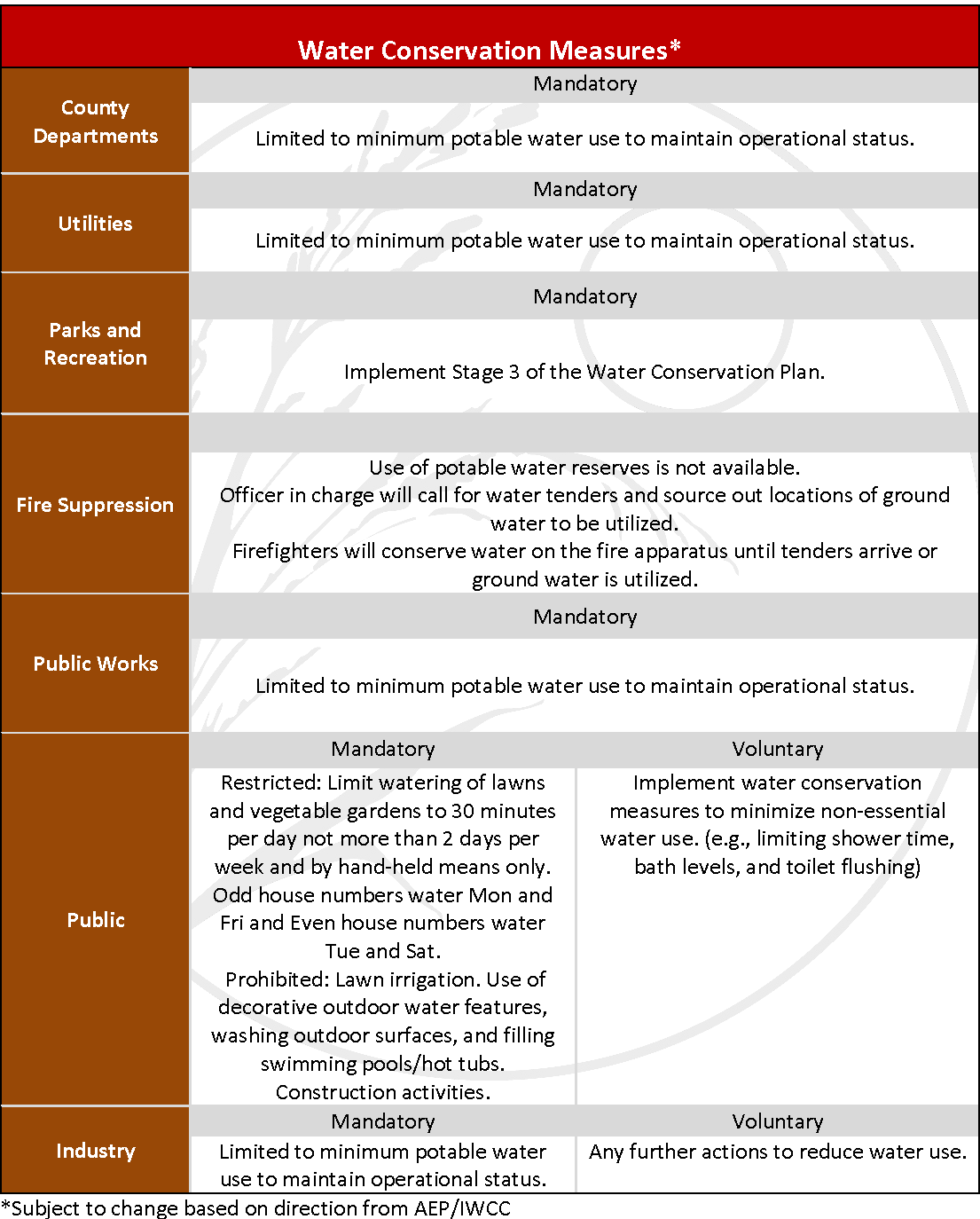
Stage 4
STAGE 4: WATER CONSERVATION MEASURES
The following water conservation measures shall be implemented immediately upon the declaration of a Stage 4 drought and shall remain in effect until the conclusion of the water conservation period.
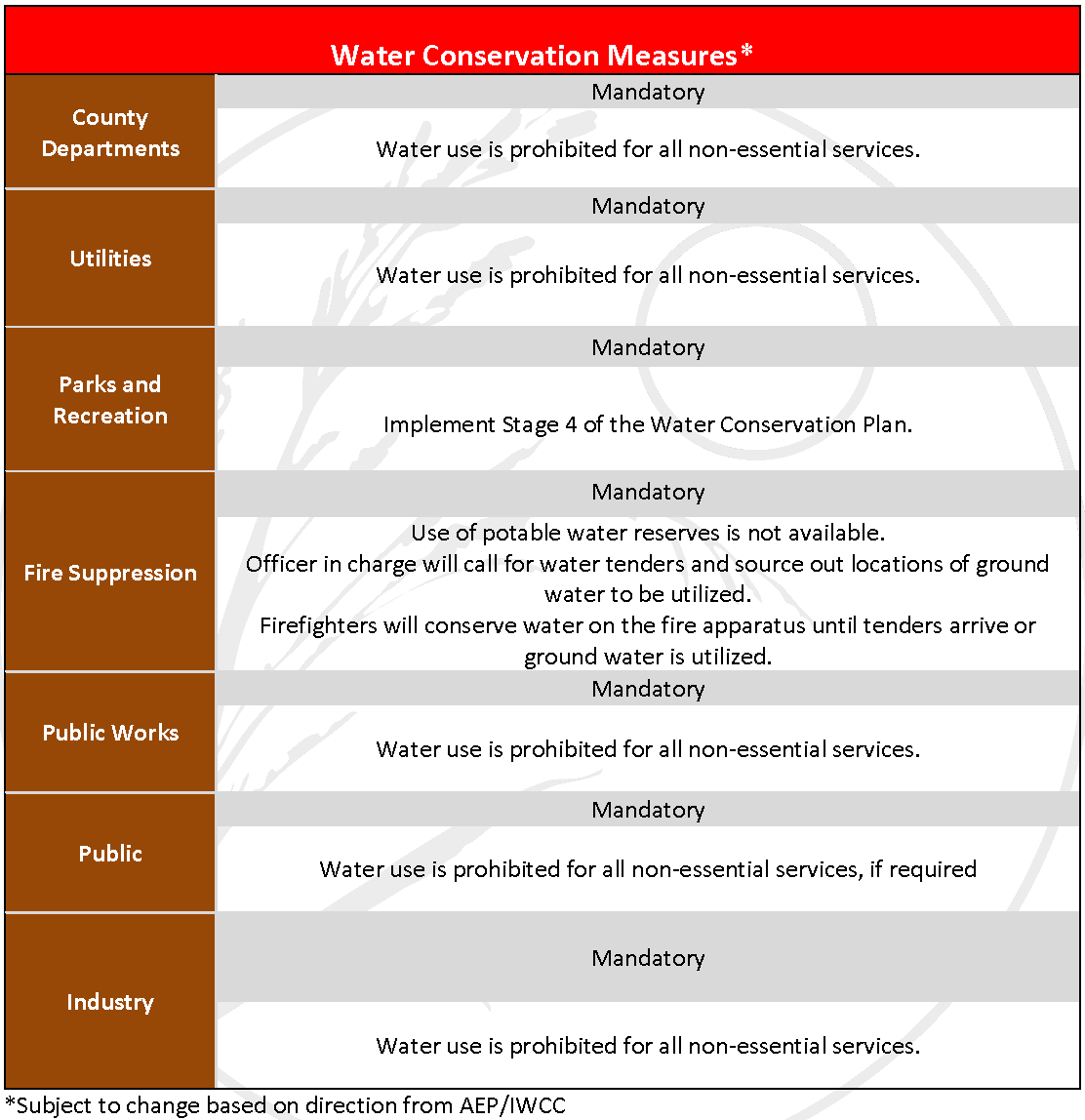
How can you help?
Normal consumption can vary from household to household, however, as a general rule a family of 4 can expect to use 1m3 per day. One cubic metre is about 220 gallons or 1,000 Litres. For a quick consumption calculation for household use only, please look at the table below.
Water Consumption Calculator
Number of People living at home | Bi-monthly water usage in cubic metres | Litres used per bi-monthly billing |
1 | 15 | 15,000 |
2 | 30 | 30,000 |
3 | 45 | 45,000 |
4 | 60 | 60,000 |
5 | 75 | 75,000 |
6 | 90 | 90,000 |
My household consumption seems very high and I don’t know why?
Keeping the general consumption rule in mind, if you are experiencing increased water consumption it could mean you have a leak. Dripping taps and leaking automatic sprinklers and toilets are a few areas that can quickly increase consumption.
I think I have a leak, what do I do?
To perform a test, make sure everything that uses water is turned off, including:
- Toilets
- Taps
- Automatic water sprinklers
- Hoses
- Automatic humidifiers
- Automatic ice machines
- Automatic drinking water filters or reverse osmosis devices
With everything off that could possibly use water, go and check your water meter to see if the odometer-like numbers are moving. If they are you have a leak.
Did you know?
A toilet can be leaking without you hearing it. Here is a way to test your toilets. Put some food colouring in the tank of the toilet and leave it for about 20 minutes. If the food colouring has found its way to the bowl – you have a leak.
A dripping tap can have a huge effect on your consumption. See the table below.
Drips Per Minute | Consumption Daily | Consumption Over 2 Months | Consumption for A Year |
5 | 2.7 Litres | 164 Litres | 996 Litres |
17 | 8.2 Litres | 491 Litres | 2,989 Litres |
Why is my water usage so much higher during the summer?
A typical household ¾ inch meter can accommodate a volume of 8m3/hr. At that rate, watering for 3 hours, 3 times per week (9 hours/week) X 8 weeks (2 month billing period) can result in an additional consumption of 576m3